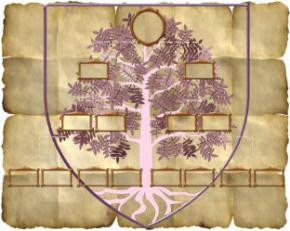Witnesses in the cloud

I’m late to the party, but I’ve just taken up the hobby whose popularity in the United States is second only to that of gardening and whose online presence is surpassed only by pornography. Stamp collecting, ham radio, amateur astronomy, knitting, and all the other traditional hobbies have their acolytes still; but they can scarcely compete with a hobby so excellently adapted to the Internet age, and so like the Internet itself with its recursive pathways and its population of ghosts and spirits.
The hobby, if you haven’t already guessed, is genealogy, and the opportunities for online participation in it are legion. Visit any of the leading sites—Ancestry.com or MyHeritage.com, for example—begin a free trial, plug in whatever names and dates come to mind, and in a matter of seconds you will receive scores, maybe hundreds, of demographic details culled (with the help of optical character recognition technology) from immigration, birth, death, and marriage records, from newspaper articles and shipping manifests, from city directories and census tables. Distant relatives who are at work on outer branches of your family tree may have made their findings publicly available, so that a mere touch of the mouse or trackpad can make them look like kissing cousins. Your great-great- uncle Harry may have his name enrolled on the database maintained by the Church of Jesus Christ of Latter-day Saints; happily, the Mormons will share with you everything they know about Uncle Harry for free, with no obligation to baptize him by proxy.
Read our latest issue or browse back issues.
Add Uncle Harry to your family tree, and your genealogy program will reflect for just a moment and then reel off a series of suggestions. Was he, perhaps, the Harry Mishkin who took a cruise in the Bahamas in 1910? Or the Harry Mishkin whose wife Rachel emigrated from Russia via Liverpool in 1875? Though you think that he was born in 1870, might he still be alive?
Each suggestion, once confirmed or rejected, yields further suggestions—and so one is drawn down the rabbit hole. More and more branchings of your family’s past and peripheral lives become visible. Occasional photographs appear as well. A page from your grandmother’s high school yearbook shows up as a blurry otherworldly apparition, but soon resolves itself into an image so vivid that her red lipstick registers even in grayscale reproduction. You’re hooked now—you’re ready to say “Hang the cost, let the free trial period expire!” You sense that you’ve begun an Internet-enabled conversation with your ancestors that has the power to change your own self-understanding.
Some critics view this hobby as a kind of ersatz historiography, an individualistic, essentially egotistical reconstruction of the past, and a technological quick fix for the problem of identity confusion. It certainly is quick, and there’s no question that the default design places you in the primary position. But there is much more to family tree building than the construction of a private identity. One’s eyes are focused on one’s relations rather than oneself. It is wonderfully ego-deflating to regard the ordinary and extraordinary lives of one’s ancestors, to rehearse their details, and to grant all of them, as it were, their own first-person perspective.
My ancestors were Ashkenazi Jews who came to the United States during the late 19th century from Odessa and various smaller towns within the Pale of Settlement established by imperial Russia. They were tailors, salesmen, travel agents. One branch, on my mother’s side, created an immigrant bank that played a vital role in the old Jewish quarter of Philadelphia. When the Depression hit and the bank failed, the scene at home was like that depicted in the Frank Capra film It’s a Wonderful Life; they pooled their resources and sold belongings in order to repay depositors, giving thanks that “Babushka” (the matriarch who founded the bank with her husband and ran it after he died) had not lived to see her institution come to such a pass.
There was a time when I could hear stories of this kind first- or secondhand, but now I have few living relatives who can recall them. To find that the Internet is enabling me to collect so many scattered facts about my ancestors’ lives is to have in my hands something like the Ashkenazi Memorbüch. With the help of findagrave.com, I can visit distant gravesites and pay my respects. If I had been raised in an observant Jewish home, I would have the Kaddish to recite in their memory, and I would fold that memory into the litanies of remembrance that are ubiquitous in Jewish liturgical prayer. But even in the exile and division that characterize our present life, and that separate me from both the religion and the secularism of my ancestors, it seems possible to place the scraps of memory I have collected on the altar of communal memory, to connect them to the divine acts of creation, revelation, and redemption we are commanded to remember, and to ask God to remember us all and to keep us all, living and dead, in the database of life.






